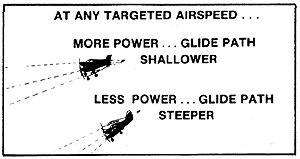Hmmm...
I don't like slowly crawling around until established. Even in a slippery airplane (a Bonanza or Mooney), you really don't have to be too concerned with flaps and gear until established. Then power reduction to some pre-determined value, pull back a tiny bit to maintain level flight, slow down to target approach speed, trim to that speed.
I flew a Cardinal RG for about 3 years as a non-equity partner. In that airplane (normal cruise 130 kts true), 21" MP and 10* flaps gave a very stable 100 kts in level flight. That's the way the "equity partner" (i.e. owner), who was instrument rated, flew all her approaches. Gear up until the FAF. The flaps were to slow down to a comfortable speed, and for stability.
Most experienced complex folks recommend gear
then flaps at the FAF. You don't want to add flaps before gear is down as you can be lulled into thinking gear is down when it ain't.

I know these sound like famous last words, but it's hard for me to imagine gear upping a retract unless there was a lot of very unusual stuff going on. The gear in that Cardinal RG (and in a 182RG I've flown more recently) make such a difference in drag that there's no way I could imagine thinking it was down when it wasn't. And then, there's the gear warning horn.
Yes, I've seen the video of those two pilots wondering what the heck that sound was. Unbelievable.
Plus gear down with no other change usually gives you the ILS descent rate (give or take an inch of MAP).
Bingo. That's exactly how my partner flew an ILS: gear down at GS intercept, then no further changes in configuration until breaking out.
In a fixed gear, low power plus flaps (10-20 degrees) usually provides enough drag to induce descent at the same speed you achieved after getting established.
I don't like to add flaps at the FAF. If I reduce power from level flight without retrimming, airspeed stays roughly constant. But adding flaps both changes the airspeed in level flight and requires retrimming. So far at least, I've always wanted to be able to start a stable descent immediately at the FAF. If At untowered fields I often do add flaps for the descent, but I do it before reaching the FAF.
So moral of the story is to go out and test various Power, Attitude Configuration (PAC) combinations until you know what will give you 450 FPM descent at 90 KIAS (and so on).
Yup, I know I'll have to do that whenever I transition to a new airplane. In this 172, if I'm trimmed for 95 kts, 2200 RPM is level flight and 1900-1950 gives me a good ILS descent at 95 kts... without flaps. Roughly the same power settings work with 10 of flaps, but airspeed is more like 80 kts.
Only after you master this do you mess around with keep the speed up approaches, etc. Then you figure out the PAC for that scenario.

95 kts in a 172 seems to satisfy most controllers around here who want me to keep my speed up. I know I'm not ready to try to do it full out at 110 kts.




